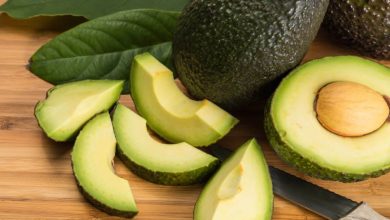Does Italian wine taste better than French wine?


Does Italian wine taste better than French wine?
Good wine, good food, and perfect ambiance; are the main prerequisites for an exciting event. . The process of fermentation turns the juice into wine.
Wine production is a practice that has been in existence for many centuries. It has become a tradition in many countries around the world, like Italy, Spain, and France, to mention a few. These countries engage in grape cultivation. They grow different varietals of grapes and use them to produce wines.
Italian wine
Italy is the hub of red wine. Italian wines are diverse in their styles but have common characteristics of exceptional taste and food-friendliness. Different regions of the country specialize in a particular brand of Italian wine, creating an indigenous variety and preserving Italy’s long-time history of winemaking. Valle d’Aosta, an Alpine region uses Nebbiolo and Pinot Nero grape species to make red wines. Wines like Barolo DOCG and Gavi DOCG are more common in northwestern Italy where Cortese and Arneis grapes are found. Liguria is famous for its large-scale production of white wine, a major export product to the United States.
Italy has different species of grapes for making quality wines.
What makes Italian wines special
High quality
Talk of quality, Italian wines top the list. They are produced in the best conditions and their grapes are not an exception. The quality of Italian wines is kept high. Their quality levels are usually rated on the wine bottles.
They are historical
Italy has long been known for wine production. The practice of planting grapes-started many years back in the country, as history puts it, from the time when the Roman soldiers went to war. And since then, wine production and consumption have become a vital part of Italians.
Globally consumed
Wines are one of Italy’s main export products to European countries. Their level of wine production and consumption ranks firsts globally. Italian wines are popular both in their country of origin and in other countries around the world.
Different specialties
Mediterranean climate, mountains, and hills, all of which are suitable for grape cultivation and wine production,
They are perfect for different occasions
There is an Italian wine for every occasion. . It doesn’t take much to remember the wine that left a lasting impression on you from the last dinner party. The Nebbiolo-made red wine, Piedmont’s Barolo, is one of the pride of Italy, an excellent wine that never ages. One other like it is, Brunello di Montalcino named after the small hill town Sangiovese and Montalcino. Amarone and Lambrusco are delicious wines for almost any occasion. Browsing through an Italian wine collection can be overwhelming because there is just too much to choose from. The best way to find the perfect wine is to keep the name of that wine that tickled your fancy and head straight for it.
French wine
. French wines come in varieties produced from a wide array of grape species making them a widely admired brand of wine. France makes different brands of red wines, white wines, and sparkling wines. . Pinot Noir wines, Beaujolais Nouveau wines, and Chablis wines are common in Burgundy. ; they are usually a refreshing blend of Pinot Noir and Chardonnay grapes. The Bordeaux region makes some of the world’s finest and most expensive wines like the Chateau Lafite-Rothschild and Château Petrus.
Qualities of Italian wines
Taste
The Pinot Noirs wines have delicate flavors of plums, dark fruit, tobacco, and earth. Alsace wines are aromatic wines, while Champagne wines are sparkling. Chablis wines, made from Chardonnay grapes are crisp, acidic wines with apples and citrus flavors.
Different kinds of wines
There are varieties of French wines. Provence produces aromatic rosé, and the Mediterranean climate in Languedoc-Roussillon makes it suitable for the production of white, red, and sparkling wines.
Aged wines
France has the most amazing aged wines; wines that continue to taste their best and retain their quality year after year. Some of them are: the Armagnac & Floc de Gascogne, the oldest eau-de-vie in France and Blanquette de Limoux, the oldest wine in the world.
Italian wine and French wine: which is better?
Both Italian and French wines have unique characteristics which make each to be distinct from the other. Italy is a highly reputable wine-producing country just like France and they have an individual history of wine production and export. Individual likes and dislikes are the major factors that can affect preference for one type of wine over another.
Some of the best wines are from France and Italy and conjure up romance and sophistication but would you be able to tell them apart and distinguish one from the other? There are four main differences between French and Italian wines to explain.
The four main differences between French and Italian wines are the grapes, taste, acidity, and tannin content.
The differences between wines are sometimes subtle, and sometimes they can be very distinct and bold. . The typical French wines are softer, subtle, and barrel-aged, a centuries-old tradition. Before buying your next bottle, let us discuss the four differences between French and Italian wines.
What Makes Italian Wine Different?
Italian wines can be traced back to the 8th century BC and were produced by the Romans with great pride. Italian wines are different due to the following important factors;
- The origin – Ancient Greek heirloom rootstock has been cloned and grown for centuries.
- The many grape varieties – There are approximately 400 grape varieties to make wine in Italy.
- Barrel aging
. Italy produces more wine than any other country globally, with over 21 million hectoliters.
Differences Between French and Italian Wines
French and Italian wines share a few similarities in becoming two of the world powerhouses in wine production. They have significant differences, and we look at the five most relevant below;
Italian Grapes Vs. French Grapes:
- French wines are produced using mainly Grenache, Pinot Noir, Cabernet Sauvignon, Chardonnay, Syrah, and Merlot varieties.
- Italian wines are produces using mainly Barbera, Pinot Grigio, Nebbiolo, Sangiovese, Fiano and Trebbiano.
Climate and Terroir:
The vinyards’ soil, climate, and physical geography are critical to the result. The fertility value of soil greatly determines success year after year, and the soil composition has a lot to do with the flavor of the grapes.
- Italian terroir and climate – Italy’s wine belt is in the South, where the weather is slightly warmer and the soil richer.
- French terroir and climate – France’s wine belt is in the North, where the weather is colder, and the soil is richer.
Wine Making Style:
Each country and culture has its unique way of making wine, and although it’s been the same for centuries, markets and buyer pressure affect production.
- French winemaking style – French vignerons and winemakers use oak barrels- specifically the Quercus robur and sessiliflora/Petraea varieties. This gives the wine a smoother body and a lighter taste.
- Pressure from specific markets forced Italian winemakers to use Botti or oak barrels to age their wines. This softens the wine for the more sensitive buyer palate.
If you want to learn more about wine freezing, check out the interesting results of how long it took my wine to freeze and how it turned out once thawed. To learn what temperature wine freezes, this article will be very helpful for you.



